Do Cars Have Front And Rear Brakes? Here’s What to Know!
The braking system on modern cars is packed full of innovations to make the car safer on the road. They allow the driver to regulate the car’s speed and keep it stationary when it is not in use. But what are the different braking systems, and do cars have rear and front brakes?
Every car comes with two rear brakes and two front brakes. Older car models will have drum brakes in the front and rear, while newer cars will have drum brakes at the rear wheels and disk brakes at the front. Sportier cars will have disk brakes front and back as they require more stopping power.
Read on to discover the different braking systems, how they are used and if a car brakes with all its wheels.
What Is The Difference Between The Front And Rear Brake Systems?
The brakes on a car don’t apply the same amount of force, and they heat up differently due to the mass distribution of the vehicle as it moves.
The vehicle’s overall design will determine the brake bias between the front and rear brakes. The bias is the ratio of braking force that each brake will receive when the pedal is pressed.
- The front brakes handle most of the braking force, and thus they have the most heat buildup due to the friction.
- The rear brakes receive less braking force because they stabilize the vehicle under braking. This is similar to a dragging force allowing the vehicle’s rear to follow the front axil.
How Do The Rear Brakes Function?
The rear brakes typically receive less than 40% of the total hydraulic braking force. This allows them to stay cooler than the front brakes. The rear brakes provide stability to the vehicle; thus, less force is required.
If the full force was allocated to the rear brakes, they would lock up every time the vehicle brakes. This is due to the rear of the vehicle becoming lighter under braking.
The rear brakes will have physical design features that will ensure that a reduced braking force is applied to the rear wheels; these are:
- Smaller brake calipers and brake rotors
- Smaller brake pads
- Lower carbon material used in the brake pads
- A thinner solid brake rotor
The rear brakes will also have the parking/emergency brake system incorporated into them.
How Do The Front Brakes Work?
The front brakes will handle up to 75% of the car’s braking force and will generate a lot more heat due to friction. The temperature of the front brakes can exceed 550°F during hard braking. When the brake is applied while the car is moving forward, the car’s center of gravity is shifted to the front.
The shift in the center of gravity places more weight and momentum on the front wheels, allowing for better traction. The better the traction, the higher the stopping force that can be applied before the wheel locks up.
The front brakes are typically configured to deal with all the forces. The master cylinder delivers a higher pressure for a better clamping force between the brake pads and brake rotor.
Front brake disks will have larger brake calipers with between 1 and 6 pistons to push the pads against the rotor. Larger brake pads made from higher carbon content provide a better friction material.
A thicker brake rotor with a broader diameter provides increased stopping torque. The brake rotor will usually be ventilated to help dissipate heat quicker.
Does A Car Have Brakes On Each Wheel?
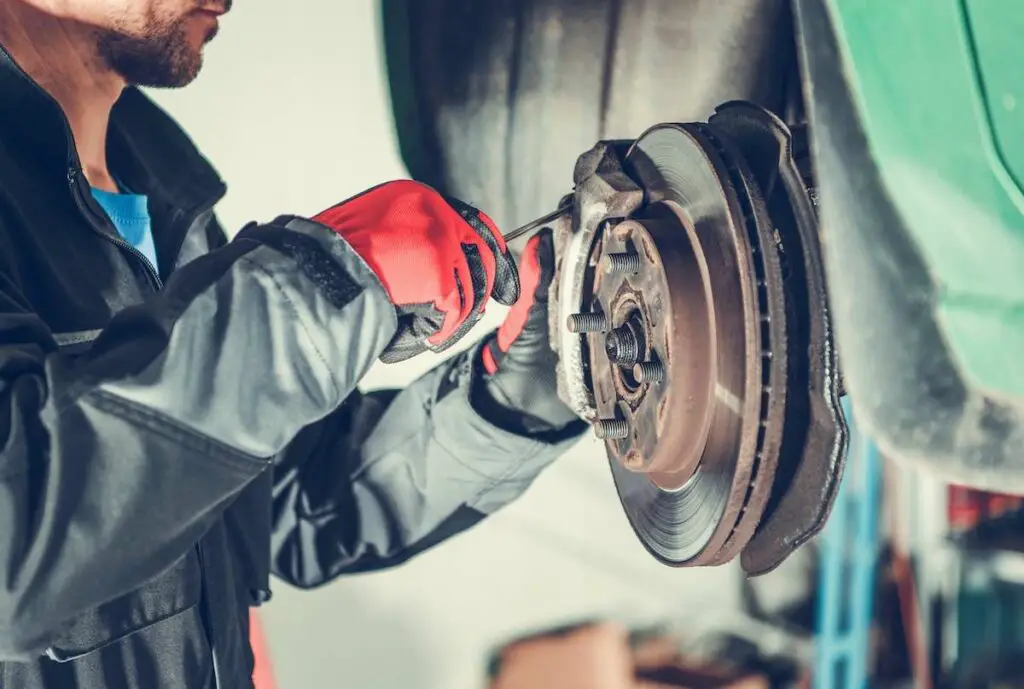
All cars come equipped with a brake system at each wheel. They can be drum or disk brakes or a combination of each, typically with drum brakes at the rear wheels and disk brakes on the front wheels. Sportier cars will have disk brakes all around as they require more stopping power for the car’s sporty characteristics.
Both drum and disk brakes use a hydraulic system to activate the brakes when pressure is applied to the brake pedal.
Disk vs. Drum Brakes
Disk and drum brakes are designed to slow and stop a car. They are both hydraulic systems and can work together as one system. Here are the design differences.
Disk Brakes
Disk brakes use brake rotors, brake pads, and calipers. Each disk brake will have a brake pad on either side that pushes against the brake rotor when the pressure is applied to the brake pedal. Disk brakes offer better stopping characteristics than drum brakes.
Two types of disk brakes are found on cars; they operate slightly differently but offer the same stopping power.
- Floating or sliding disk brake system: uses a caliper to push the inner brake pad onto the brake disk.
- Fixed disk brake system: the caliper does not move and stays secured in its bracket
Drum Brakes
Drum brakes use a combination of brake drums, brake shoes, and wheel cylinders. Each drum brake has a set of brake shoes that are forced against the brake drum when the pressure is applied to the brake pedal.
Drum brakes use tension springs that retract the brake shoes when the pedal is released.
Disc Brakes Vs. Drum Brakes Qualities
Here are the differences between disc and drum brakes:
- Braking ability – Disc brakes offer more braking force at the wheels than drum brakes. The increased force provides shorter stopping distances.
- Heat management – Disc brake components are exposed to direct airflow, which cools them faster. Drum brake components are contained in the drum and take longer to dispel heat.
- Performance in wet conditions – Because of their open design, disc brakes easily throw off water keeping the brakes dry. When water enters the drum brakes, it takes longer to dry, exposing the friction material to moisture for prolonged periods.
- Weight: Disc brakes are normally lighter than drum brakes. The lighter a vehicle is overall, the easier it is to brake.
- Brake dust accumulation -The drum brake system is closed, so brake dust will be trapped inside, and periodic cleaning will be required. Disc brakes are self-cleaning, as the disc brake pads wipe the rotor while braking.
What Are Power-Assisted Brakes?
A power assisted brake is a hydraulics system used in most vehicles. It uses an arrangement of mechanical components to increase the force applied by the brake pedal.
The increased force is enough to stop a vehicle weighing several tons. The brake pedal is connected to a vacuum booster which is the first step of the force multiplication.
The vacuum booster passes the force to the master cylinder, which applies a compressive force to the hydraulic system and forces it through the brake lines to the brake calipers. The brake fluid then pushes the brake calipers forcing the brake pads against the brake rotor. The friction slows and stops the rotation of the vehicle’s wheels with minimal input fron the brake pedal.
What Are ABS, EBD, And EBA?
A modern car’s braking system can come with certain safety features. These are:
- ABS (Anti-lock Braking System) – It stops the wheels from locking up under brake, so the driver can retain steering control. It doesn’t necessarily stop you any quicker in the dry but makes braking much easier and prevent the wheels from locking up.
- EBD (Electronic Brake Distribution) – An onboard computer automatically distributes braking pressure between all four wheels for maximum effect.
- EBA (Electronic Braking Assist) – The onboard computers detect when there is an erratic or panic stop and will apply maximum braking pressure.
How Does A Cars Parking Brake Work?
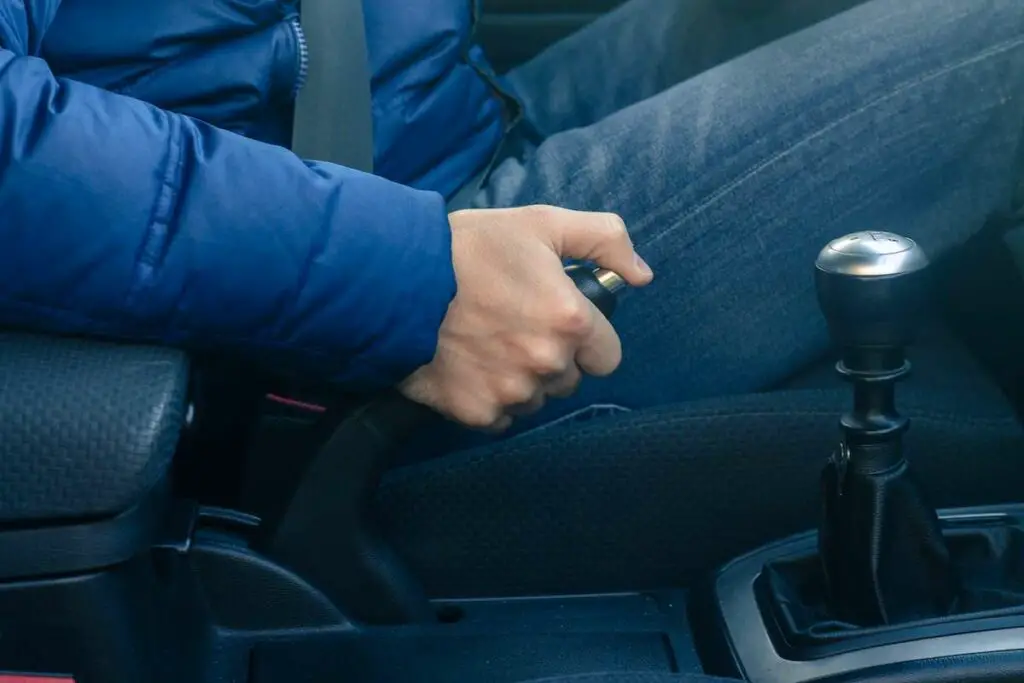
Separately from the hydraulic braking system, all cars have mechanical parking brakes acting on the rear wheels. The emergency brake gives limited braking if the hydraulic system fails completely. Still, its primary purpose is as a parking brake.
The parking brake lever pulls a pair of cables linked to the rear brakes via a set of smaller levers, pulleys, and guides. A ratchet on the handbrake lever keeps the brake on once applied. A push button disengages the ratchet and frees the lever.
On drum brakes, the parking brake system presses the brake shoes against the drums.
When Should Brake Pads And Rotors Be Changed?
Brake pads should last between 20,000 and 60,000 miles, and brake rotors can last up to 70,000 miles. This will depend on how the brakes are used under normal driving conditions. Several warning indicators will let you know when a brake replacement is needed. They are:
1. The Brakes Make Squeaking Noises
When the brake pads are near their end of life, they will emit a squeaking noise. A metal wear indicator on the brake pads creates this warning noise. This is the first sign that the brake pads need replacement.
2. The Brakes Vibrate When Applied
If there are vibrations when appling the brakes, it is another sign that the vehicle’s braking system needs maintenance. The rotors may be warped, which will cause uneven brake pad wear.
3. The Stopping Distance Is Increased
If there is an obvious difference in the stopping performance of the car, it is a sign that the brake pads are worn. The stopping distance will also be affected if the brake fluid level has dropped below the minimum mark, resulting in less hydraulic pressure.
4. The Brake Pad Indicator Light Illuminates
If the brake warning light is illuminated, the system has insufficient brake fluid. This is the same warning light that illuminates when the parking brake is set.
5. The Brake Pads Look Thin
Inspect the brake pads through the wheel rim. If there is less than a ¼ inch of brake pad left, the brakes will need to be replaced.

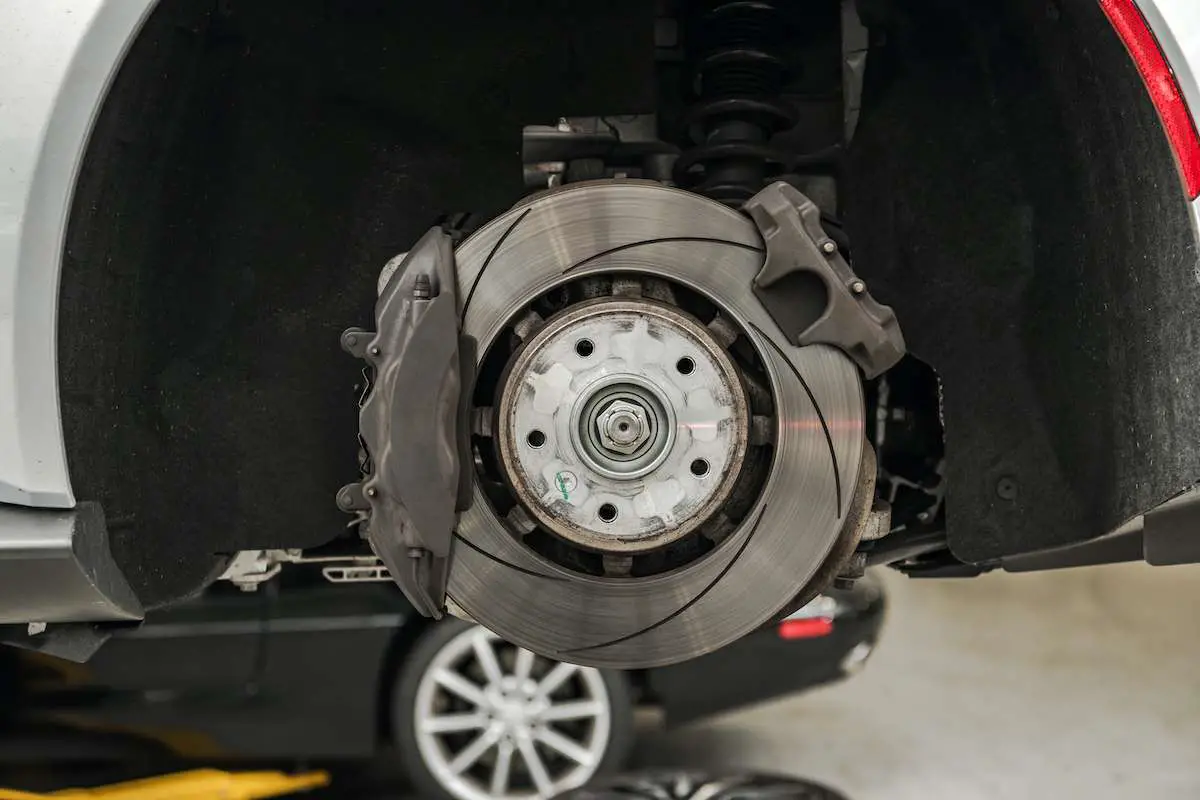
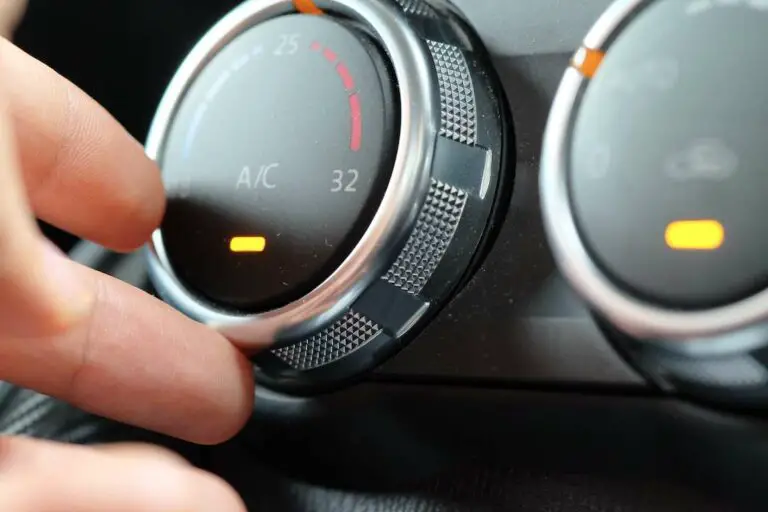
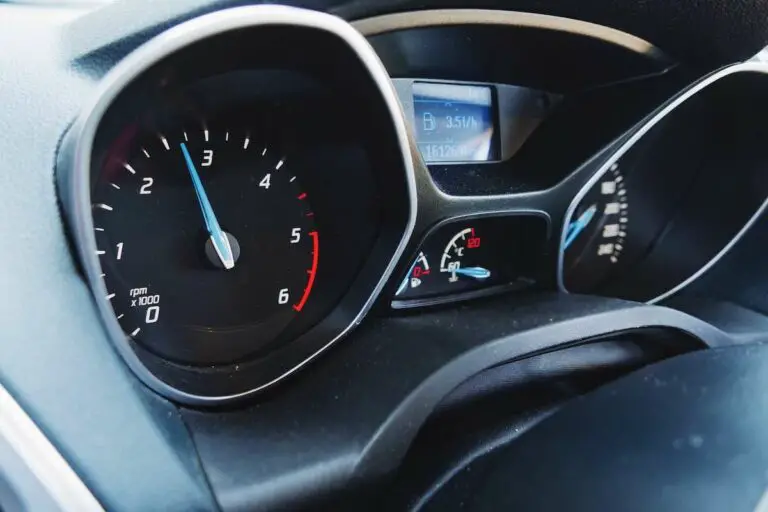
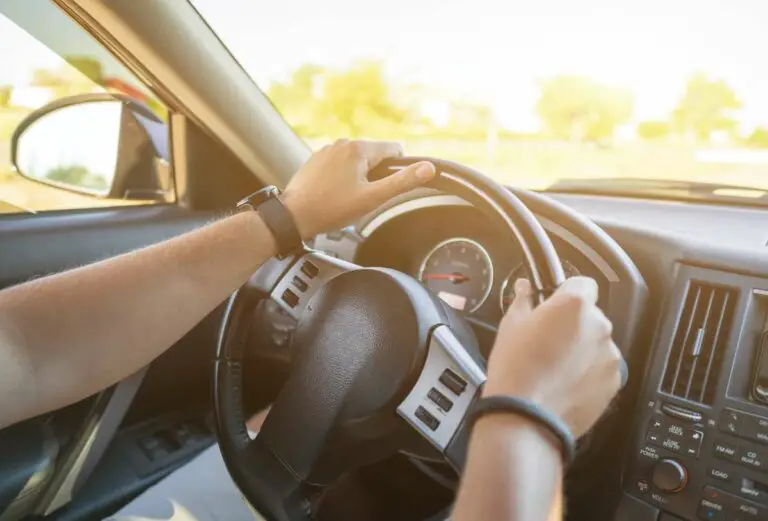
![Car AC Cools For a While And Then Stops? [Mystery Solved!]](https://vehicleuniversity.com/wp-content/uploads/2023/01/girl-driver-with-hand-fan-suffering-from-heat-in-c-2022-11-15-04-07-09-utc-768x512.jpeg)
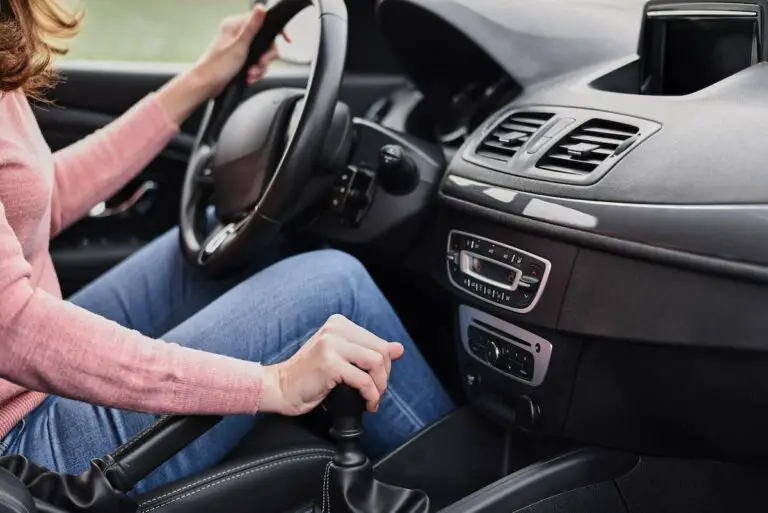
![Car Accelerating On Its Own? [Reasons & How to Fix!]](https://vehicleuniversity.com/wp-content/uploads/2022/10/car-driving-the-norwegian-national-road-64-known-a-2021-08-26-16-34-54-utc-768x511.webp)